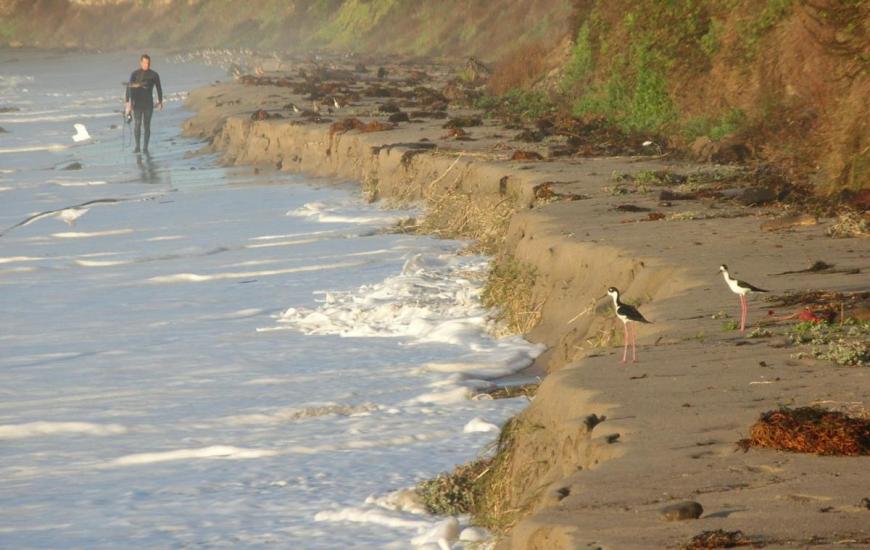Climate change has the potential to affect how much sand and sediment is delivered to California beaches. Sand delivery is influenced by a variety of oceanic conditions, including wave strength and direction, storms, and the shape of the seafloor. It also is influenced by streams and rivers, which carry sediment from inland sources to the beach.
Changes in rainfall may alter when and how much sediment washes down rivers to the sea. Changes in sea level, seawater temperature, and other ocean dynamics may change how much the ocean contributes to the erosion of beaches. Studies that model these complicated processes have shown that climate change may alter where “erosion hotspots” occur along the California coastline.
Learn more about sand movement on sandy beaches.

Removing dams from coastal waterways is a management action that will help replenish sandy beaches eroding due to sea level rise. Rivers and streams carry sediment from the land to the sea, naturally replenishing beaches. Since many of California’s waterways are dammed, dam removal is now on the radar of coastal planners who are concerned about the future of their sandy beaches. The Coastal Conservancy is funding and supporting several dam removal projects, including the Matilija Dam in Ventura County, CA and the Rindge Dam in Los Angeles County, CA.



